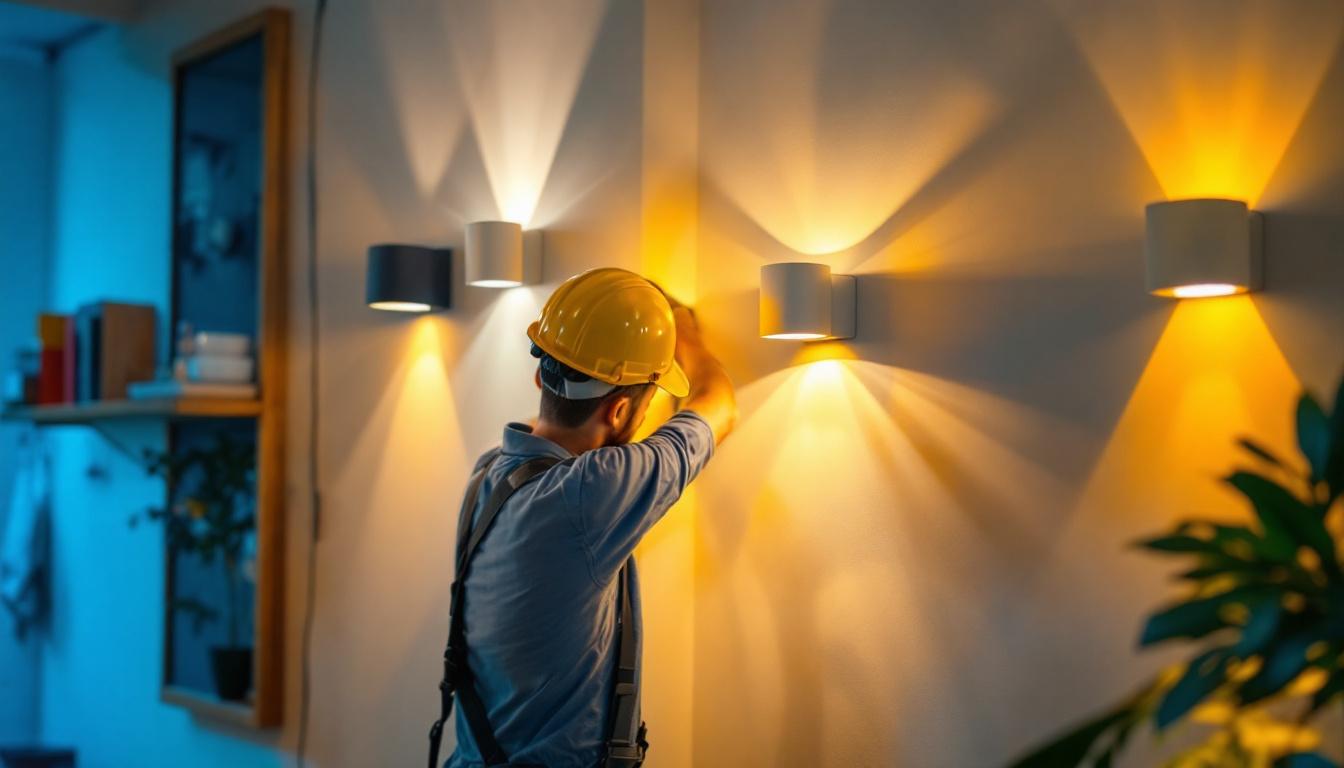
In the bustling environment of a commercial kitchen, effective lighting is not just a luxury; it is a necessity. Proper lighting enhances visibility, ensuring that chefs and kitchen staff can perform their tasks safely and efficiently. The right lighting design can significantly reduce the risk of accidents and injuries, which are common in high-paced culinary settings. For instance, well-placed task lighting over workstations allows chefs to see their ingredients clearly, minimizing the chances of cutting accidents or misplacing items. Additionally, ambient lighting can set the mood for the kitchen, promoting a more pleasant working atmosphere that can enhance productivity and morale among staff.
Moreover, commercial kitchen lighting plays a crucial role in food safety. Adequate illumination helps in identifying potential hazards, such as spills or broken glass, and ensures that food is prepared and presented in a clean and hygienic manner. Proper lighting also aids in the inspection of food items for freshness and quality, allowing staff to catch any issues before they become a problem. This article delves into how commercial kitchen lighting enhances safety and the considerations that lighting contractors should keep in mind during installations. Factors such as the color temperature of the lights can influence how food appears, with warmer tones often making dishes look more appetizing, while cooler tones can enhance the perception of cleanliness and precision in food preparation.
In addition to safety and aesthetics, energy efficiency is another critical aspect of lighting in commercial kitchens. Many modern kitchens are now opting for LED lighting solutions, which not only provide excellent illumination but also consume significantly less energy compared to traditional incandescent bulbs. This shift not only reduces operational costs but also aligns with sustainability goals that many restaurants are striving to achieve. Furthermore, the longevity of LED lights means less frequent replacements, which can be particularly beneficial in a fast-paced environment where downtime must be minimized. When planning lighting layouts, kitchen designers and contractors must also consider the varying levels of brightness needed for different areas, ensuring that food prep zones are well-lit while also providing softer lighting in dining or waiting areas to create a welcoming atmosphere.
One of the primary factors to consider in kitchen lighting design is the illumination level. The Illuminating Engineering Society (IES) recommends specific foot-candle levels for different areas within a kitchen. For example, food preparation areas typically require higher illumination levels to ensure precision in tasks such as chopping, measuring, and plating.
Inadequate lighting can lead to accidents, such as cuts and burns, as well as food safety issues. Therefore, it is essential for lighting contractors to assess the specific needs of each kitchen area and provide adequate lighting solutions that meet or exceed these recommendations. Moreover, the use of dimmable lighting can offer flexibility, allowing chefs to adjust the brightness according to the task at hand, whether it’s a detailed plating process or a more general cleaning task. This adaptability not only enhances safety but also contributes to a more comfortable working environment, reducing eye strain during long hours of kitchen operation.
The color temperature of lighting can significantly impact the perception of cleanliness and the overall ambiance of a kitchen. A cooler color temperature (around 4000K to 5000K) is often preferred in commercial kitchens as it mimics daylight, enhancing visibility and alertness among staff. This is particularly important in fast-paced environments where quick decision-making is crucial.
Additionally, color rendering index (CRI) is vital in food preparation areas. High CRI lighting allows kitchen staff to see the true colors of ingredients, which is essential for identifying freshness and quality. Lighting contractors should prioritize fixtures with a CRI of 90 or above to ensure that food is prepared and presented accurately. Furthermore, the psychological effects of color temperature should not be overlooked; warmer tones can create a more inviting atmosphere for dining areas, while cooler tones can help maintain focus and efficiency in food prep zones. This balance between functionality and aesthetics is key to a well-designed kitchen space.
Glare and shadows can create hazardous conditions in a kitchen environment. Bright lights can cause discomfort and distract staff, leading to mistakes. Similarly, shadows can obscure potential hazards, increasing the risk of accidents. To mitigate these issues, lighting contractors should consider using diffused lighting and strategically placing fixtures to minimize shadows.
Task lighting, such as under-cabinet lights or focused spotlights, can also enhance visibility in specific areas while reducing overall glare. By carefully planning the placement and type of lighting, contractors can create a safer and more efficient workspace. Additionally, incorporating adjustable fixtures can provide versatility, allowing kitchen staff to direct light where it is most needed at any given moment. This adaptability not only improves safety but also enhances the overall workflow, making it easier for staff to navigate the kitchen efficiently. Furthermore, the integration of smart lighting systems can offer real-time control over lighting conditions, allowing for immediate adjustments based on the tasks being performed, which is particularly beneficial during busy service hours.
Ambient lighting provides overall illumination in a kitchen and is typically achieved through ceiling-mounted fixtures. This type of lighting is essential for general visibility and helps create a well-lit environment. LED panel lights and fluorescent fixtures are common choices for ambient lighting in commercial kitchens due to their energy efficiency and long lifespan.
It is important to ensure that ambient lighting is evenly distributed throughout the kitchen to avoid dark spots that could lead to accidents. Lighting contractors should consider the layout of the kitchen and the placement of equipment when designing ambient lighting solutions.
Task lighting is crucial for specific work areas where detailed tasks are performed. This includes food preparation stations, cooking areas, and dishwashing zones. Effective task lighting should be bright enough to illuminate work surfaces without causing glare.
Under-cabinet lights, pendant lights, and adjustable track lighting are popular options for task lighting. These fixtures can be positioned to provide direct light where it is needed most, enhancing safety and efficiency in the kitchen. Contractors should assess the specific tasks performed in each area to determine the best lighting solutions.
While not a primary focus in commercial kitchens, accent lighting can enhance safety by highlighting specific areas or equipment. For instance, illuminating fire extinguishers, first aid kits, and emergency exits with accent lighting ensures they are easily visible in case of an emergency.
Using LED strip lights or small spotlights can effectively draw attention to these critical safety features. Lighting contractors should consider incorporating accent lighting into their designs to improve overall safety awareness in the kitchen environment.
Energy efficiency is a significant consideration in commercial kitchen lighting, not only for cost savings but also for safety. LED lighting has become the go-to choice for many kitchens due to its low energy consumption and long lifespan. By reducing heat output, LED lights also help maintain a cooler kitchen environment, which is essential for safety and comfort.
Moreover, the durability of LED fixtures makes them less likely to break, reducing the risk of accidents associated with shattered bulbs. Lighting contractors should advocate for LED solutions, highlighting their benefits in both energy savings and safety enhancements.
Incorporating smart lighting technology into commercial kitchens can further enhance safety. Smart lighting systems allow for automated control of lighting levels based on occupancy or time of day. This ensures that areas are well-lit when needed and can reduce energy consumption when the kitchen is not in use.
Additionally, smart lighting can include features such as emergency lighting that activates during power outages, ensuring that staff can navigate the kitchen safely. Lighting contractors should stay informed about the latest smart lighting technologies and consider how they can be integrated into kitchen designs.
Compliance with local safety regulations is paramount in commercial kitchen lighting installations. Different regions may have specific codes regarding lighting levels, fixture types, and energy efficiency. Lighting contractors must familiarize themselves with these regulations to ensure that their installations meet safety standards.
Failure to comply with local codes can result in fines, equipment failures, and, most importantly, safety hazards. It is essential for contractors to conduct thorough research and possibly consult with local authorities to ensure compliance throughout the design and installation process.
Even the best lighting systems require regular maintenance to ensure they operate safely and efficiently. Routine inspections should be conducted to check for burnt-out bulbs, damaged fixtures, and overall performance. Regular maintenance not only prolongs the life of the lighting system but also ensures that safety standards are consistently met.
Lighting contractors should establish a maintenance schedule for their clients, providing guidance on how to conduct inspections and when to replace fixtures. This proactive approach can prevent potential safety hazards and ensure that the kitchen remains a safe working environment.
In conclusion, commercial kitchen lighting is a critical element that enhances safety in lighting installations. By understanding the importance of proper illumination levels, color temperature, and glare reduction, lighting contractors can create designs that not only meet aesthetic needs but also prioritize safety.
Implementing energy-efficient solutions, staying compliant with local regulations, and ensuring regular maintenance are essential practices that contribute to a safe kitchen environment. As the culinary world continues to evolve, the role of effective lighting in enhancing safety will remain a top priority for lighting contractors and kitchen operators alike.
By investing in quality lighting solutions and prioritizing safety, kitchens can operate more efficiently, reduce the risk of accidents, and ultimately deliver better service to their customers.
Ready to elevate the safety and efficiency of your commercial kitchen projects? Look no further than LumenWholesale for all your lighting needs. Our spec-grade lighting products are designed to meet the highest industry standards, ensuring your installations shine with reliability and performance. With unbeatable wholesale prices and the convenience of free shipping on bulk orders, you can trust LumenWholesale to provide premium lighting solutions that blend quality with affordability. Don’t compromise on safety or value—explore our collection today and discover the best in wholesale lighting at the best value.

Discover how the Lepro 25 Pack 4Ft T8 LED Tube Light can boost your profits with energy savings and durability.

Discover the art of mastering scone lighting with expert tips and strategies tailored for lighting contractors.

Discover the must-have tools and resources for lighting contractors in our comprehensive guide to light bulb distributors.

Discover expert insights from lighting contractors on optimizing your space with LED lights wall installations.